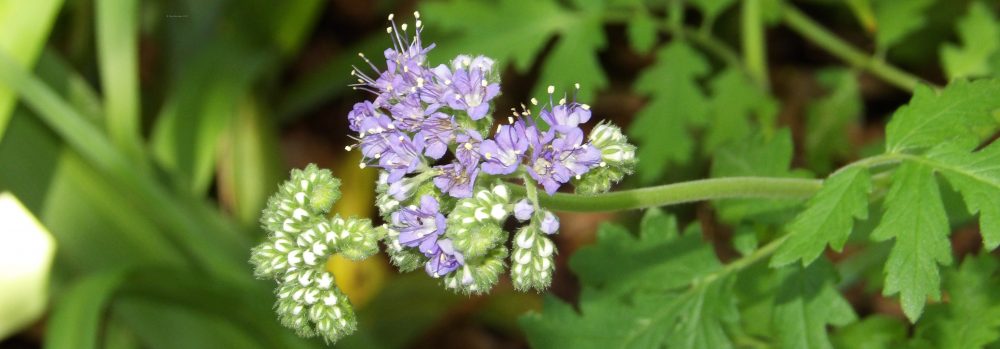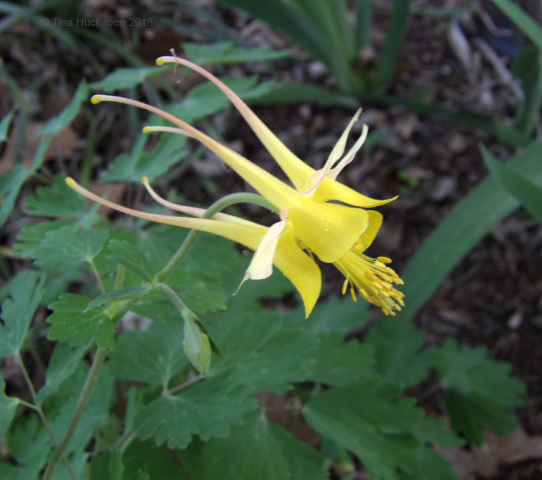The siren beckons.
Entranced, I follow. I won’t be bashed onto rocks, though I’ll admit to occasionally tripping on a few as I meander through spring song.
The diversity is wide, the color wheel complete.
Some are related to one another.
Many have thrived in this region for millenia.
Others hail from far away.
Most are brief bloomers, in the garden for only a short time.
Their seeds will linger for another season, either in my garden or elsewhere. The seeds await the right moment, the right conditions, to create.
Bloom spikes may last into summer, morphing to seed delivery systems, delivering DNA packages to the soil. Foliage lasts beyond.
Colors are sunshine bright,

Damianita (Chrysactinia mexicana) flanked by the foliage rays of Softleaf yucca (left) and Red yucca (right).
…or rich and dark.
All nourish some living thing,
…including my gardening soul.












Beautiful! That Coral Honeysuckle is amazing, I have not had good luck with that plant. The first one I planted only lived a few years, the second one has hardly any flowers. I’m planning to move it when things are a bit warmer/drier.
LikeLike
I was just about to ask about the same thing. I have grown only the common Japanese honeysuckle, which I really like for its simplicity and serious fragrance! The coral honeysuckle looks interesting, but I am not certain that I want a honeysuckle without fragrance. Isn’t that what they are grown for?
LikeLike
Tony, here in Austin we’re lucky to host the largest educational repository of Norht American native plants–The Lady Bird Johnson Wildflower Center: https://www.wildflower.org/ As well as ongoing research on native plants and their value, the LBJWC boasts an extensive set of gardens: several demo gardens, a prairie, an arboretum–just so much! Founded by Lady Bird Johnson, the First Lady of President Johnson, and the actress, Helen Hayes, the center has become renowned for its research and educational resources. Because of its prominece, there’s a serious movement, here in Texas and elsewhere, toward encouraging native plants over non-natives and especially in discouraging invasive plants. The Japanese honeysuckle you refer to is what I grew up with too, but it can be invasive in places and in our challenging climate, ultimately it usually fails. Whereas, something like the coral honeysuckle (which, btw, is native to a huge swath of North America), thrives, even when we see multi-year droughts, broken by devestating floods, which is our weather pattern paradigm.
I don’t grow only natives in my garden, but I’ve found that by-and-large, they thrive with little care and give my garden its definition as a Texas garden. Some of the plants I grow (like coral honeysuckle) are native to a large area, but others, (like the hill country penstemon, are native to specific areas hear, or nearby. I guess I should mention that Austin lies on the edge of the Texas HIll Country. 🙂 I grow another plant (Big Red sage, Salvia penstemonoides: https://www.wildflower.org/plants/result.php?id_plant=SAPE6), that was thought extinct, but found, here in Austin, and is now grown by several of our local nurseries. My point is that one might choose to grow for more than fragrance or plant prettiness; I choose plants that will stand up to our climate and will feed…whomever! I don’t grow only natives, but in general, I try to choose natives over other plant choices.
LikeLiked by 2 people
I live with acres of natives, not by choice, but because I live and work in a very forested area. However, we also grow acres of non native rhododendrons on the farm, and maintain an arboretum of mostly exotic specie. Potentially invasive plants are not allowed in the arboretum because of the scale of the area. They would be impossible to control if they escaped. In my very modest home garden, I grow plants that I like. Japanese honeysuckle is grown only at one of the job sites in town because of the potential to become invasive, but it is one of my favorites. I would like to grow it at home. Our native honeysuckle really is not much to look at. We do happen to have a coral honeysuckle at the same site as the Japanese honeysuckle, but it died back last year, just after it was planted. (I did not see it until it was already dead.) I really hope it recovers because I have never grown it before. (I do not think that it will.) Burmese honeysuckle is rare here, and I really dislike it. Not only does it lack fragrance, but it is not even pretty. If our coral honeysuckle does not recover, I would like to find another. I read about it, and took a liking to it because it happens to be native to Oklahoma, where I studied other specie. Well, as you mentioned, it is native to a huge area. As a horticulturist, I am certainly not limited to growing plants that are pretty or fragrant. There are not many things that I will not grow. I have grown some plants that are very unpopular, and some yuccas that are rather unsightly. I grow our native blue elderberry as a substitute for the black elderberry that is not allowed here. I grow many utilitarian plants, and a few herbal plants.
LikeLike
It’s too bad Coral Honeysuckle has no fragrance. But the bright flowers are still pretty great, plus it attracts hummingbirds much more than the Japanese species.
LikeLiked by 1 person
Yup! Funnily enough, I don’t get hummers on mine. I think it blooms early enough that the hummers haven’t arrived back. I do get plenty of insect activity though.
LikeLiked by 1 person
Jason, I did notice that that the coral honeysuckle is native to your state, but sometimes a plant just ain’t happy. Perhaps moving it will work. The one in the photo is in a fair amount of shade, but still puts on a good show in the spring, though few, if any, blooms for the rest of the year. My other coral honeysuckle gets much more sun, which makes it happy. It’s grown huge, blooms like crazy in spring, as well as sporadically in the summer. Good luck with the move–hope it works better for you.
LikeLiked by 1 person
Tina her photos are magnificent and her plants divine. I love all of them. The Lonicera sempervirens with its fuchsia flower is beautiful. The Aquilegia canadensis I love her as well as the yellow Aquilegia. I love the European Poppy as the Cedar Salvia. La Rosa Martha Gonzales together with the Tradescantia gigantea form a divine couple. The photo of the butterfly feeding on the Spidewort is the wonder of Mother Nature in action. Tina your garden is wonderful and sure to be full of pollinators eating. How are your hives? I hope they are well and fully operational. I am still in Madrid because my Father has become ill with the bronchi. It’s already better. I hope that in two or three weeks we can go to our country house and enjoy the Spring. Have a good week. Greetings from Margarita.
LikeLike
Wishing your father a speedy recovery, Margarita and I hope you can get to your country house for spring. I’m very fond of the plants I profiled here–but there are others I love as well!
LikeLiked by 1 person
Tina is very kind to worry about my Father’s health. I appreciate it a lot. Thank you. Greetings from Margarita.
LikeLike
So much colour is intoxicating. Thank you for sharing your beautiful blooms.
LikeLike
Thank you, Chloris. Spring is so easy, beautiful color all around!
LikeLike
A very beautiful and colourful array of blooms in your garden Tina. You must be very happy with your efforts to get them to look so good. I’m sure the wildlife appreciate your efforts too!
LikeLike
Thank you, Sue. I hope the critters are happy and well-fed. 🙂
LikeLiked by 1 person
And by sharing your plenty, you’ve nourished our gardening souls, too. Thank you! I am going to go back and look at all this loveliness again. It is cold and gray and depressing here, and will be for at least the next 10 days. Thanks for brightening my day!
LikeLike
Thanks, Beth and I’m sorry you’re still in the gloom. But I know just how beautiful your later spring, summer and autumn are, so just hang on a little longer!
LikeLike
I love that coral honeysuckle. I’ve never seen anything like it before. There are many lovely plants growing in your garden.
LikeLike
Thank you, Jane. It’s a nice time of year here in Texas!
LikeLiked by 1 person
A nice range of blooms for spring. Your coral honeysuckle looks great, much better than mine. Maybe they just need a few more years.
LikeLike
Hmmm. They don’t usually take much time at all. I bought another one, shortly after one of our hard freezes and it looked like crap. It’s growing and even has a couple of bloom clusters. It does best in sun, but I’ll bet you know that and it isn’t picky about soil. Do you have oak trees nearby? Sometimes they mess with other plants.
LikeLike
Lovely post and I’ve got to get me a coral honeysuckle…
LikeLike
Yes you do!!
LikeLike
Does it care about full Texas sun or part shade? I don’t trust the universal sun recommendations on plants. They’re not thinking of our sun when they say things!
LikeLike
The best ones I’ve seen are in full sun, though I think in nature, they grow along in dappled and partial. So, yes!
LikeLiked by 1 person
I can’t believe I’ve never seen coral honeysuckle in the wild. It must be around, somewhere. I suspect Armand Bayou and some of the other gardens and nature centers surely must have it.
On my recent little jaunt, I did find native Columbine for the first time, both red and yellow. Now I’m a little confused, though. Is the yellow also native, or could it have been an “escapee” from somewhere? Or do they hybridize naturally, like the bluebells will turn white?
I found cedar sage, too, and a number of flowers I’d never seen. Best of all was finding a mystery plant and finally identifying it. I’m giving it a whole post of its own, because it’s a Texas native, but belongs in the far west and southwest — somehow, it had made its way to the Willow City Loop.
Did I mention to you seeing so many colors of spiderwort on the road next to the field of groundsel? They were growing in nearly pure sand, and ranged from light pink to deep purple. Lovely.
Isn’t it amazing how quickly things have turned? Even a day or two is enough for an entirely new species to emerge. There’s something purple along the roads now that I still haven’t identified, and the amsonia (blue star) is everywhere. What a season!
LikeLike
I’ve seen it in the wild, but it’s never as full and lush as it is in a cultvated garden. Yes, there are several varieties of yellow columbine and yes, they hybridize like crazy. In fact, I probably need to get some true yellow columbine, as mine have all mixed and maxed over the years. I happen to love the blush of pink that happens when a yellow has bred with a red, but still, that pure yellow is hard to beat. You did mention the variety of colors in the spiderwort. I have some differences in color, but not huge. I don’t know that I’ve ever seen blue stars–I should fix that!
LikeLike